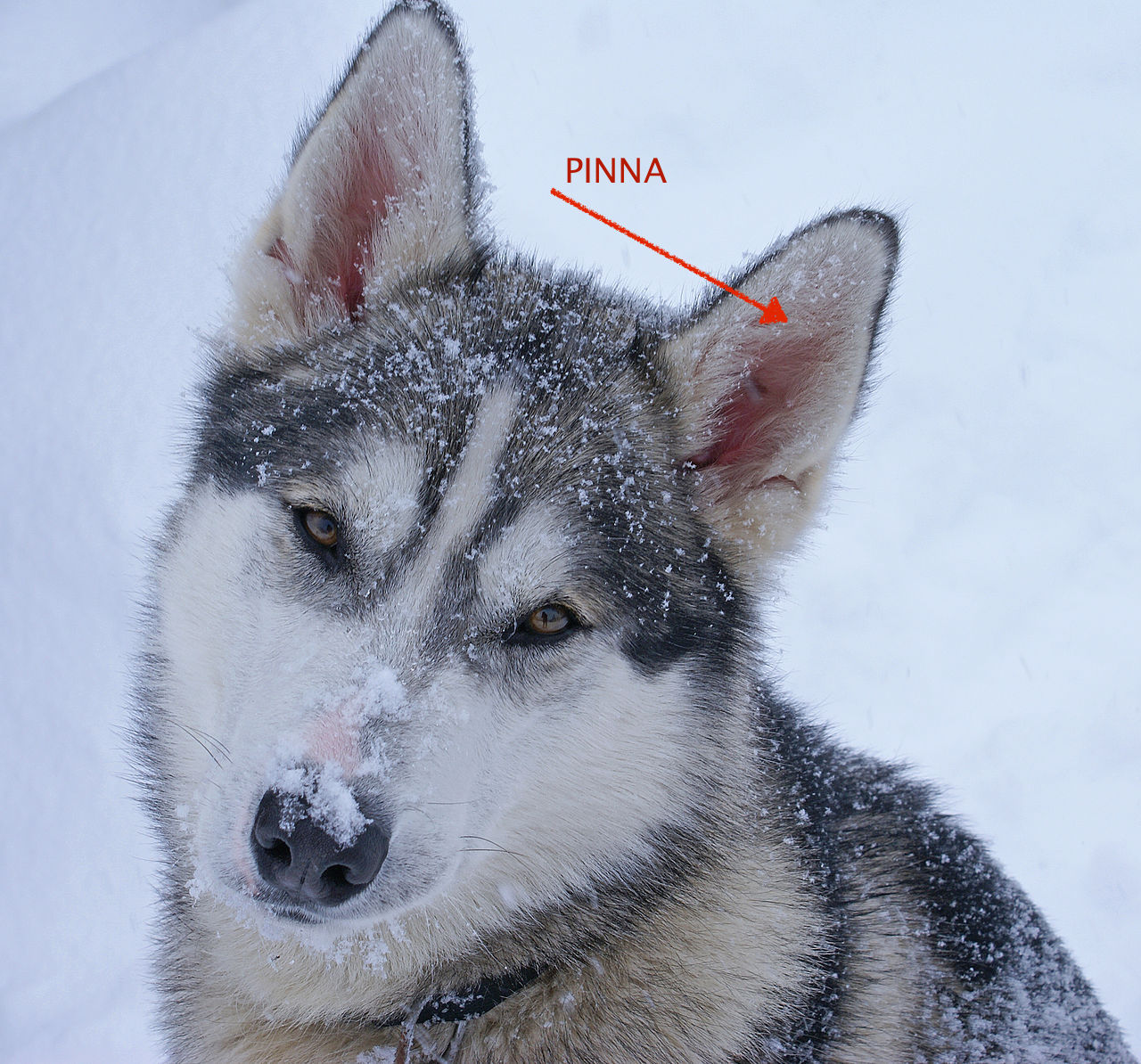
The Nina, the Pinta and the Santa Maria. An explanation of this mnemonic device comes at the end.
Most of us call the flap of our dog’s ear its “leather,” but it’s also known as the “auricle” or, more commonly, the “pinna,” and it tends to be the most frequently injured part of a dog’s external ear.
This funnel-like plate of cartilage is filled with tiny blood vessels, so an ear injury can bleed a lot. If the vessels rupture and bleed under the skin, they can form a fluid-filled pocket, and now you’ve got yourself a hematoma.
Some dogs, especially floppy eared breeds, can develop a hematoma from just shaking their head vigorously (say, after a bath). If the hematoma ruptures while the dog is shaking his head, he’s apt to spray blood EVERYWHERE, and now your dog has redecorated your room in Early Walking Dead. Sometimes, an ear is what’s most available when two dogs have a dispute and settle matters with their teeth. In hunting dogs, a torn ear is a fairly common injury that can occur just from scraping past a briar, barbed wire fence, or sharp branch.
Pinnae are highly mobile and can be controlled by a dog independently of the other ear with more than a dozen separate muscles that control its movement. It’s part of what helps a dog locate so precisely the source of a sound.
If you can remember the Nina, the Pinta and the Santa Maria, you might remember that the parts of the ear you’ve read about here so far are the Pinna, the Helix and the Anti-Helix. Look, any port in a storm.
Image of “Balder” by Randi Hausken from Bærum, Norway
